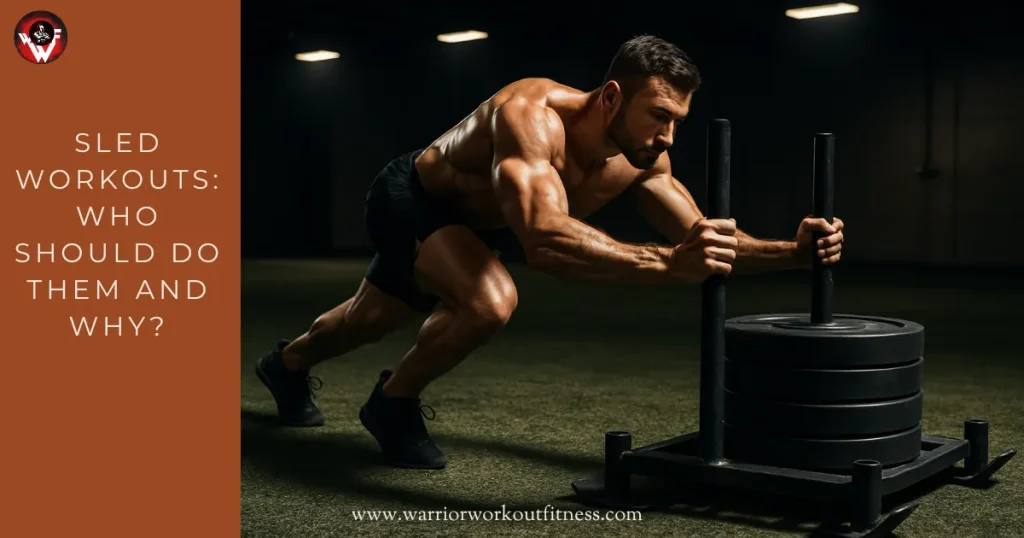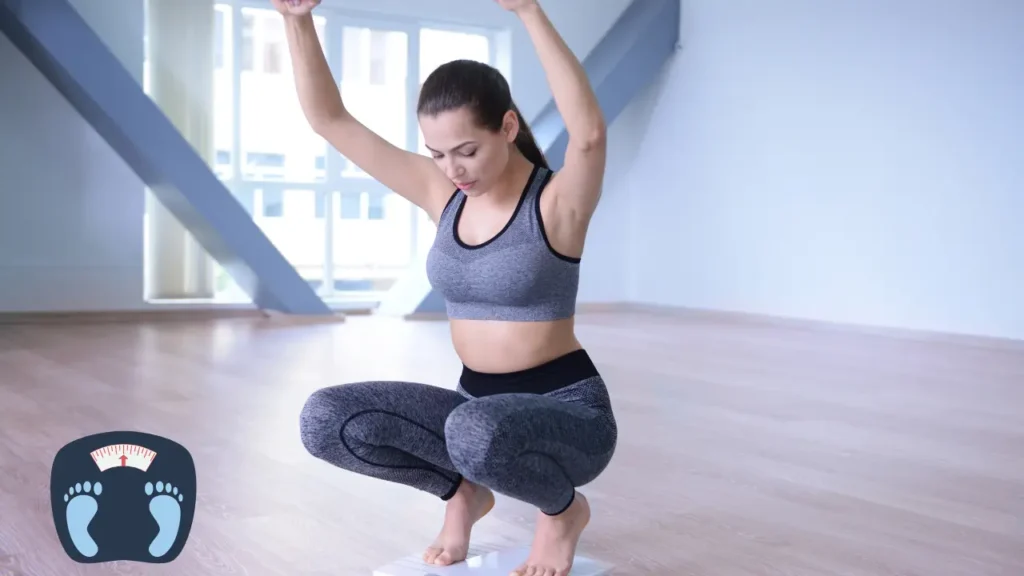
In the ever-evolving world of functional training and strength conditioning, sled workouts have emerged as a powerful, versatile, and joint-friendly tool. Once reserved for athletes and football training camps, sled pushes and pulls are now making their way into CrossFit boxes, strength gyms, and even physical therapy clinics.
So, what is a sled workout, and who should actually be doing it?
Spoiler: Almost everyone can benefit.
In this in-depth article, you’ll learn:
- What sled workouts are and how they work
- Benefits backed by science and experience
- Who should include sled training in their routine
- Safety tips, variations, and sample workouts
Let’s break down everything you need to know about this underrated beast of a training tool.
🛷 What Is a Sled Workout?
A sled workout involves pushing, pulling, or dragging a weighted sled across a surface (usually turf or rubber flooring). The resistance comes from friction and load weight, making it a low-impact yet highly effective training method.
Common sled exercises include:
- Sled Push (aka prowler push)
- Sled Pull (via rope, straps, or harness)
- Backward Drag
- Sled Rows or Presses (using handles or ropes)
Unlike traditional weight training, sled workouts involve continuous movement, making them perfect for combining strength and cardio in one workout.
🔥 Benefits of Sled Workouts
✅ 1. Full-Body Strength and Conditioning
Sled workouts engage multiple muscle groups at once:
- Legs (quads, glutes, hamstrings)
- Core
- Upper body (if pulling or rowing)
- Grip and forearms
It’s one of the few tools that combines push, pull, and drag mechanics into one modality.
✅ 2. Low Impact, High Output
Unlike barbell squats or deadlifts, sled work:
- Places no spinal load
- Is joint-friendly, especially on knees and hips
- Allows high force production without injury risk
🧠 Perfect for rehab, older adults, or high-volume training with less soreness.
✅ 3. Cardiovascular and Fat-Burning Boost
Sled workouts raise your heart rate fast while training strength. They improve:
- Anaerobic endurance
- VO2 max
- Caloric burn
This makes sled training ideal for fat loss and metabolic conditioning (metcon).
✅ 4. Improves Athletic Performance
Athletes use sled work to:
- Boost sprint speed
- Build explosive starts
- Strengthen posterior chain
- Improve footwork and coordination
Research shows resisted sled sprints improve acceleration and horizontal force production in sprinters and football players.
✅ 5. Versatile for All Fitness Levels
Whether you’re:
- A beginner
- A powerlifter
- A rehab patient
- A weekend warrior
Sled workouts can be adjusted for load, volume, and intensity to fit your exact goals.
Read this also : What Is the 3-3-3 Rule Gym? A Complete Guide to This Emerging Fitness Trend
🧬 Science Behind Sled Workouts
A study published in the Journal of Strength and Conditioning Research found that sled training improves lower body strength, sprint acceleration, and vertical jump when added to a traditional training routine.
Another study showed resisted sled pushes had less impact on joint strain compared to barbell back squats while offering comparable lower-body engagement.
Key advantages from a scientific view:
- High concentric force (no eccentric = less soreness)
- Functional carryover to real-life movement
- Promotes neuromuscular coordination and power
👥 Who Should Do Sled Workouts?
The short answer: almost everyone.
But here’s a breakdown by specific group:
💪 1. Strength & Power Athletes
Ideal for powerlifters, Olympic lifters, strongmen/women.
- Builds explosive drive without overloading joints
- Helps improve bar speed and core strength
- Works posterior chain (key for squats and deads)
🏃♂️ 2. Sprinters and Team Sport Athletes
Sled drags and sprints improve:
- Acceleration
- Ground contact force
- Change of direction
Used extensively in football, rugby, soccer, and track & field.
🧘♀️ 3. Rehabilitation Patients
Because sled pushes are concentric-only (no muscle lengthening), they’re perfect for:
- Post-ACL rehab
- Knee or hip recovery
- Tendonitis and joint sensitivity
Many physical therapists use sleds for safe, progressive overload.
Read this also : How Brisk Walking Transforms Your Body and Burns Fat
🧓 4. Older Adults / Aging Populations
Sleds help develop:
- Functional strength (walking, stair climbing)
- Fall prevention (balance + core)
- Cardiovascular endurance
With minimal injury risk.
🏋️ 5. CrossFitters & General Fitness Enthusiasts
Perfect for circuits, finishers, or standalone metcons.
- Quick to fatigue muscles
- Great for fat burn and HIIT-style training
- Fun and scalable for all levels
⚖️ 6. Weight Loss Clients
Because of its full-body, high-intensity nature, sled training:
- Burns a high number of calories
- Preserves muscle while cutting fat
- Improves insulin sensitivity and metabolism
🧪 Sample Sled Workouts by Goal
🏃 For Speed and Power:
Sled Sprint Intervals (6 rounds):
- 10-meter sprint push (heavy load)
- Walk back
- Rest 60 sec
✅ Builds acceleration, drive, and leg power
🔥 For Fat Loss:
Sled HIIT Circuit (3 rounds):
- 20m push (moderate weight)
- 20m backward drag
- 10 sled rows
- 20 sec rest
✅ Full-body burn + cardio in 10 mins
🏋️ For Muscle Gain:
Leg Finisher (4 rounds):
- 30m heavy sled push
- 20m backward drag
- 10 walking lunges (bodyweight)
- Rest 90 sec
✅ Adds volume, tension, and pump
🧯 Safety Tips for Sled Workouts
- Start light and progress – It’s easy to overload too early
- Warm up properly – Activate glutes, hips, and calves
- Use turf or rubber surfaces – Avoid concrete/asphalt
- Keep spine neutral – Don’t round your back while pushing
- Stay hydrated – It’s more cardio-intensive than it looks
🏁 Sled Workout FAQs
Q1: How often should I do sled workouts?
2–3 times per week is plenty for most people, either as:
- A warm-up
- A workout finisher
- A stand-alone conditioning session
Q2: Is sled pushing better than squatting?
Not better, just different. Sled work:
- Has no eccentric phase, so less soreness
- Targets similar muscles with less joint stress
- Ideal complement to squats and deadlifts
Q3: Can beginners do sled workouts?
Absolutely. Start with light weight and short distances. Focus on form over speed.
Q4: Do I need a fancy sled?
Nope. You can use:
- A prowler sled (most common)
- A wheel sled
- Even DIY versions using tires and ropes
📌 Final Verdict: Who Should Do Sled Workouts?
Anyone looking for real-world strength, improved conditioning, and joint-friendly training can benefit from sled workouts.
From pro athletes to rehab patients, sleds offer a low-risk, high-reward way to improve fitness across all ages and skill levels.
✅ Recommended for:
- Athletes
- Strength trainees
- CrossFitters
- Fat loss clients
- Rehab patients
- Seniors
- Busy professionals looking for quick, intense workouts
🧠 Key Takeaways
- Sled workouts provide functional strength, fat burn, and low-impact conditioning
- Suitable for all fitness levels, from rehab to elite
- Combines cardio and strength into one efficient training method
- Safer than traditional lifts but equally effective in the right context
- Versatile enough for sport, rehab, or aesthetics goals



